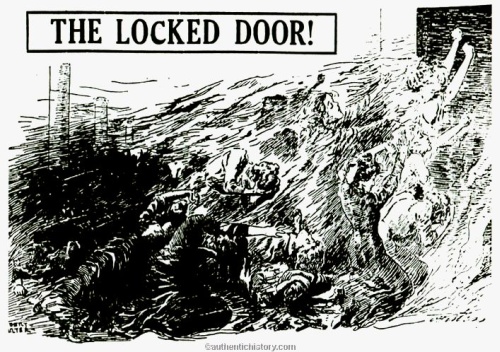Today is the ninety-ninth anniversary of the legendary fire at the Triangle Shirtwaist Factory, which reigned for ninety years as the worst workplace disaster in New York history. A hundred and forty six workers died that day, most of them young women. Escape routes were cut off by doors that were kept locked to prevent employee pilfering. The main exit from the factory floor was designed so that only one person at a time could pass through; departing workers had their handbags inspected by a night watchman. “It comes down to dollars and cents against human life, no matter how you look at it”, in the words of then-Fire Chief Edward Croker.
Well, yes, of course it comes down, at least in part, to dollars and cents against human life (where “dollars and cents” are, of course, stand-ins for “a whole lot of other things we care about”). The interesting question is whether the terms of trade were favorable. In other words: If the workers, in advance of the fire, had been fully informed of all the risks and all the potential consequences, would they have wanted those doors locked or open? Or more generally: When the New York state legislature responded to the fire with over two dozen new occupational health and safety laws, were they compounding the disaster?


 James Hansen heads the NASA Goddard Institute for Space Studies. If you have a question about radiative transfer in planetary atmospheres, he’s your go-to guy. But if you have a question about economics—say, about the merits of cap-and-trade programs—you might want to consult a different sort of specialist. Hansen’s
James Hansen heads the NASA Goddard Institute for Space Studies. If you have a question about radiative transfer in planetary atmospheres, he’s your go-to guy. But if you have a question about economics—say, about the merits of cap-and-trade programs—you might want to consult a different sort of specialist. Hansen’s 
